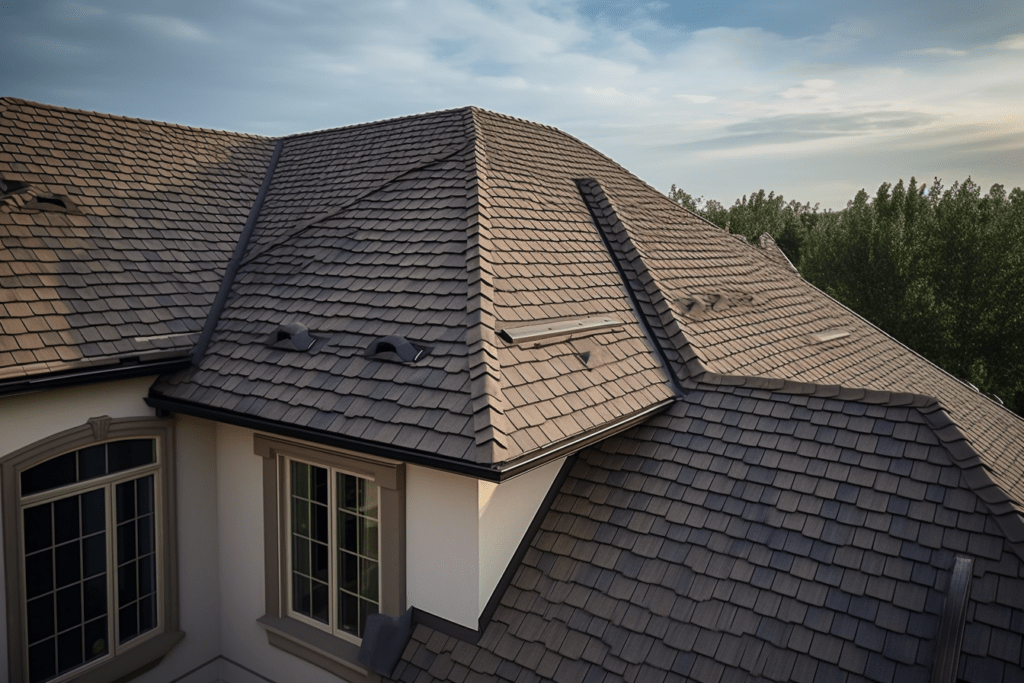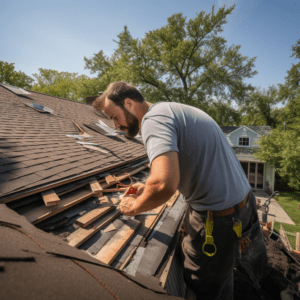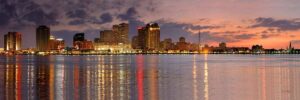In the realm of architecture and construction, innovative roofing designs have garnered significant attention due to their potential benefits. One notable example is the implementation of sustainable materials in roofing designs, which not only enhance the aesthetic appeal but also contribute towards environmental sustainability. Moreover, creative and modern roofing designs offer homeowners an opportunity to create unique and visually appealing structures for their residences. Additionally, exploring innovative roofing solutions for extreme weather conditions enables architects and engineers to design buildings that are resilient and durable in adverse weather situations. This article delves into various aspects of innovative roofing designs, including their benefits, use of sustainable materials, creative trends for modern homes, energy efficiency improvements, unique designs for commercial buildings, and solutions for extreme weather conditions.
Key Takeaways
- Increased energy efficiency
- Enhanced durability
- Improved aesthetic appeal
- Maintains comfortable indoor temperatures
Benefits of Innovative Roofing Designs
The benefits of innovative roofing designs include increased energy efficiency, enhanced durability, and improved aesthetic appeal. When it comes to energy efficiency, innovative roofing designs can greatly reduce the amount of heat that enters or exits a building. This is achieved through various methods such as using reflective materials, incorporating insulation layers, and implementing ventilation systems. By minimizing heat transfer, these designs help in maintaining comfortable indoor temperatures and reducing the reliance on heating or cooling systems.
In terms of durability, innovative roofing designs are often built with superior materials that offer enhanced resistance to weathering and damage. For instance, advanced composite materials can withstand harsh environmental conditions such as extreme temperature fluctuations and heavy rainfall. Additionally, these designs may incorporate features like reinforced structures or impact-resistant coatings to provide added protection against potential hazards.
Moreover, innovative roofing designs contribute significantly to the overall aesthetic appeal of a building. They offer architects and designers more freedom in creating visually appealing structures by utilizing unconventional shapes, colors, and textures. The use of sustainable or eco-friendly materials further adds to the visual appeal while promoting environmentally conscious practices.
Sustainable Materials for Roofing Designs
The use of eco-friendly roofing options, energy-efficient roofing materials, and long-lasting sustainable roofs has become increasingly important in the construction industry. These key points address the need for environmentally friendly solutions that not only reduce carbon emissions but also provide energy savings and durability. By exploring the various options available, such as solar panels, green roofs, and recycled materials, professionals can make informed decisions to promote sustainability in their roofing designs.
Eco-Friendly Roofing Options
Eco-friendly roofing options present environmentally sustainable alternatives for modern roofing designs. These options focus on reducing the environmental impact of traditional roofing materials and practices, while also providing long-lasting and efficient solutions. One such option is green roofs, which involve covering the roof surface with vegetation, providing numerous benefits such as improved insulation, stormwater management, and reduction in urban heat island effect. Another option is solar roofs that integrate solar panels into the roof design to harness renewable energy from the sun. Solar roofs not only generate electricity but also contribute to reducing carbon emissions. Additionally, cool roofs are designed to reflect more sunlight and absorb less heat compared to traditional roofs, thereby reducing the energy needed for cooling buildings. Eco-friendly roofing options offer practical solutions for a sustainable future by promoting energy efficiency and reducing environmental impacts.
Energy-Efficient Roofing Materials
Energy-efficient roofing materials play a crucial role in reducing energy consumption and promoting sustainability in building design. These materials are designed to minimize heat transfer, thereby reducing the need for heating or cooling systems and resulting in significant energy savings. One such material is cool roofs, which possess high solar reflectance and thermal emittance properties that help keep buildings cooler by reflecting sunlight and radiating absorbed heat back into the atmosphere. Another option is green roofs, which involve the installation of vegetation on rooftops to provide insulation and reduce heat island effect. Additionally, insulated metal panels offer excellent thermal performance by combining insulation with durable outer layers. Finally, photovoltaic solar panels integrated into roofing materials can generate electricity from sunlight, further enhancing energy efficiency. By incorporating these innovative roofing designs into building projects, architects can contribute to sustainable development while creating comfortable indoor environments and reducing overall energy consumption.
Long-Lasting Sustainable Roofs
Long-lasting sustainable roofs contribute to the durability and environmental performance of buildings. These roofs are designed to withstand harsh weather conditions, reduce maintenance costs, and minimize the need for replacement. One key aspect of long-lasting sustainable roofs is their material selection. Materials such as metal, concrete, and clay tiles are known for their longevity and resistance to damage. Additionally, advanced technologies like green roofs and solar panels can be integrated into these roof designs to further enhance their sustainability and energy efficiency. Proper installation techniques also play a crucial role in ensuring the longevity of sustainable roofs by preventing leaks, minimizing water infiltration, and enhancing structural stability. Overall, long-lasting sustainable roofs provide an effective solution for building owners who prioritize durability, environmental responsibility, and cost-effectiveness in their construction projects.
Creative Roofing Designs for Modern Homes
This discussion explores the use of sustainable materials for roofs, which are crucial in modern architectural designs. These materials not only contribute to environmental preservation but also offer durability and energy efficiency. Additionally, unique shapes and angles in roofing designs provide aesthetic appeal while maximizing natural light and ventilation, enhancing the overall functionality of the structure. Furthermore, integration of greenery on rooftops promotes a harmonious connection between architecture and nature, creating a sustainable living environment that benefits both occupants and the surrounding ecosystem.
Sustainable Materials for Roofs
One potential avenue for promoting sustainability in roofing is the utilization of environmentally-friendly materials. The choice of materials used in roofing systems can significantly impact a building’s overall environmental performance. There are several options available that offer both durability and eco-friendliness. One such material is metal, which is highly recyclable and has a long lifespan, reducing the need for frequent replacements. Another option is clay tiles, which are made from natural materials and have excellent thermal insulation properties. Additionally, green roofs, which involve the use of vegetation on rooftops, provide numerous environmental benefits such as improved air quality and reduced stormwater runoff. By incorporating these sustainable materials into roofing systems, buildings can reduce their carbon footprint and contribute to a more environmentally-conscious future.
Unique Shapes and Angles
The incorporation of unique shapes and angles in roof designs can contribute to the aesthetic appeal and architectural character of a building while also providing functional benefits such as improved water drainage and enhanced structural stability. Unique roof shapes, such as curved or sloped roofs, can create visual interest and add a sense of dynamism to a structure. These designs can also help shed water more efficiently, reducing the risk of leaks or damage caused by standing water. Additionally, angular roof designs, like gable or hip roofs, offer increased structural stability by distributing weight evenly and minimizing wind resistance. By carefully considering the shape and angle of a roof design, architects can create visually striking buildings that are both functional and durable.
Integration of Greenery
The incorporation of greenery into roof designs has become increasingly prevalent in contemporary architecture, as it offers numerous environmental benefits and contributes to the overall sustainability of buildings. Green roofs, also known as living roofs or eco-roofs, involve the strategic placement of vegetation on rooftops. This integration of greenery provides several advantages. Firstly, it helps mitigate urban heat island effect by reducing surface temperatures and improving air quality through the absorption of pollutants. Additionally, green roofs contribute to stormwater management by reducing runoff and promoting natural water filtration. They also enhance building insulation, reducing energy consumption for heating and cooling. Moreover, these innovative roofing designs provide habitat for wildlife and increase biodiversity in urban areas. Finally, green roofs can improve the aesthetic appeal of buildings while creating pleasant outdoor spaces for occupants to enjoy. Overall, integrating greenery into roof designs is a practical approach that brings multiple environmental benefits to contemporary architecture.
(Note: The word count provided includes only the main body text and excludes any headings or subheadings.)
Innovative Roofing Trends to Enhance Curb Appeal
Among the current trends in innovative roofing designs, there is a focus on enhancing curb appeal. Homeowners are increasingly looking for roofing options that not only provide functional benefits but also add aesthetic value to their properties. Enhancing curb appeal through innovative roofing designs can significantly increase the overall attractiveness and market value of a home.
One popular trend in enhancing curb appeal is the use of architectural shingles. These shingles have a three-dimensional appearance and mimic the look of natural materials such as slate or wood. They come in various colors and patterns, allowing homeowners to choose a design that complements their home’s style and exterior.
Another trend is the incorporation of metal roofing systems with unique finishes and textures. Metal roofs are known for their durability and longevity, but they are now being designed to add visual interest as well. Textured metal panels can create an eye-catching look while still providing all the functional benefits of traditional metal roofs.
In addition to these trends, homeowners are also opting for green roof installations to enhance curb appeal. Green roofs not only provide insulation benefits but also create a visually appealing landscape on top of the building.
Overall, enhancing curb appeal through innovative roofing designs offers homeowners an opportunity to showcase their personal style while increasing property value. By staying up-to-date with current trends and choosing materials that combine functionality with aesthetics, homeowners can achieve an attractive and marketable roof design.
How Innovative Roofing Designs Improve Energy Efficiency
Innovative roofing designs not only enhance the curb appeal of a building but also have the potential to significantly improve its energy efficiency. Energy-efficient roofing systems can help reduce the energy consumption required for heating and cooling, leading to lower utility bills and decreased carbon emissions.
One way innovative roofing designs improve energy efficiency is by incorporating reflective materials that minimize heat absorption from the sun. These materials have high solar reflectance and thermal emittance properties, allowing them to reflect a significant amount of solar radiation back into the atmosphere. This reduces the amount of heat transferred into the building, resulting in less reliance on air conditioning systems.
Another aspect of energy-efficient roofing designs is insulation. Adequate insulation prevents heat transfer between the interior and exterior of a building, reducing both heating and cooling needs. Innovative roof designs may include additional layers or specialized insulation materials that provide enhanced thermal resistance.
Furthermore, some innovative roofing designs incorporate technologies such as solar panels or green roofs. Solar panels convert sunlight into electricity, offsetting a portion of a building’s energy requirements. Green roofs utilize vegetation to absorb heat, provide natural insulation, and improve air quality.
Unique Roofing Designs for Commercial Buildings
Unique roofing solutions for commercial buildings often incorporate advanced technologies and materials to improve energy efficiency and reduce environmental impact. These innovative designs aim to address the specific needs of commercial buildings, such as large roof areas and high energy consumption. One such solution is the installation of cool roofs, which are designed to reflect more sunlight and absorb less heat compared to traditional roofs. This reduces the amount of heat transferred into the building, leading to lower cooling loads and reduced energy consumption.
Another unique roofing design for commercial buildings is green roofs, also known as living roofs or vegetative roofs. These roofs are covered with a layer of vegetation that helps to regulate temperature, improve air quality, reduce noise pollution, and provide visual aesthetics. Green roofs act as natural insulators, keeping the building cooler in summer and warmer in winter.
In addition to cool roofs and green roofs, some commercial buildings implement solar panel systems on their rooftops. These photovoltaic (PV) systems convert sunlight into electricity, which can be used on-site or fed back into the grid. By harnessing solar power, these buildings not only reduce their reliance on conventional energy sources but also contribute towards a greener environment by reducing greenhouse gas emissions.
Overall, adopting unique roofing designs for commercial buildings can have significant benefits in terms of energy efficiency and environmental sustainability. The use of advanced technologies and materials enables these solutions to effectively minimize energy consumption while maximizing comfort levels within the building.
Exploring Innovative Roofing Solutions for Extreme Weather Conditions
One effective approach to addressing extreme weather conditions in commercial buildings is through the implementation of roofing solutions that are specifically designed to withstand and protect against severe weather events. These innovative roofing designs aim to enhance the structural integrity and resilience of commercial buildings, ensuring their ability to withstand high winds, heavy rainfall, hailstorms, and even hurricanes or tornadoes.
To achieve this level of protection, these roofing solutions often incorporate advanced materials and construction techniques. For instance, impact-resistant shingles made from reinforced asphalt or metal can provide increased durability against hailstones and other falling debris. Additionally, the use of multiple layers of waterproofing membranes can prevent leaks caused by heavy rain.
Moreover, some innovative roofing systems include features such as wind-resistant design elements like aerodynamic shapes or secure fastening mechanisms that help reduce uplift forces during storms. Furthermore, reflective coatings or cool roof technologies can be applied to mitigate heat absorption from intense sunlight and minimize the risk of thermal damage.




